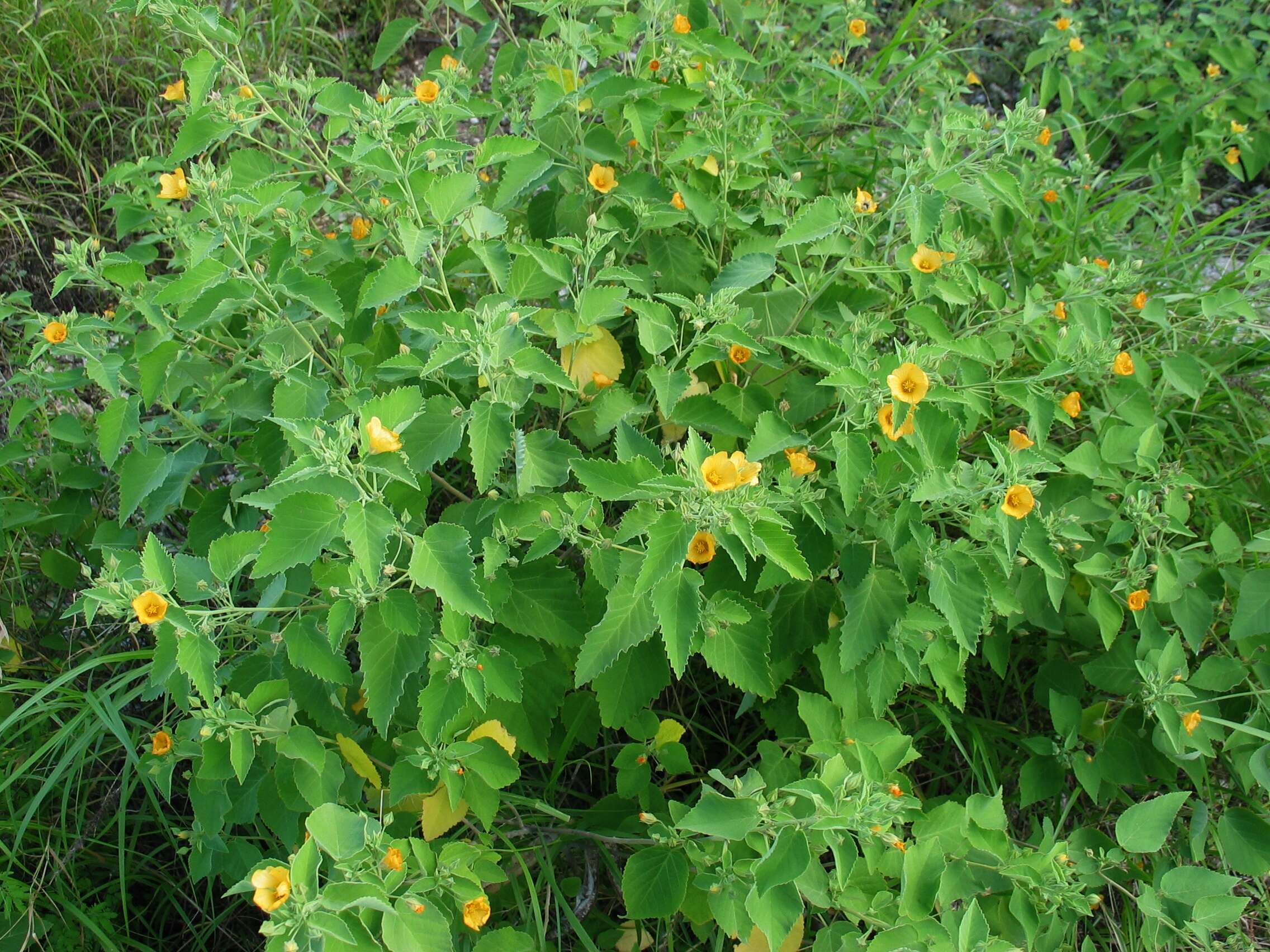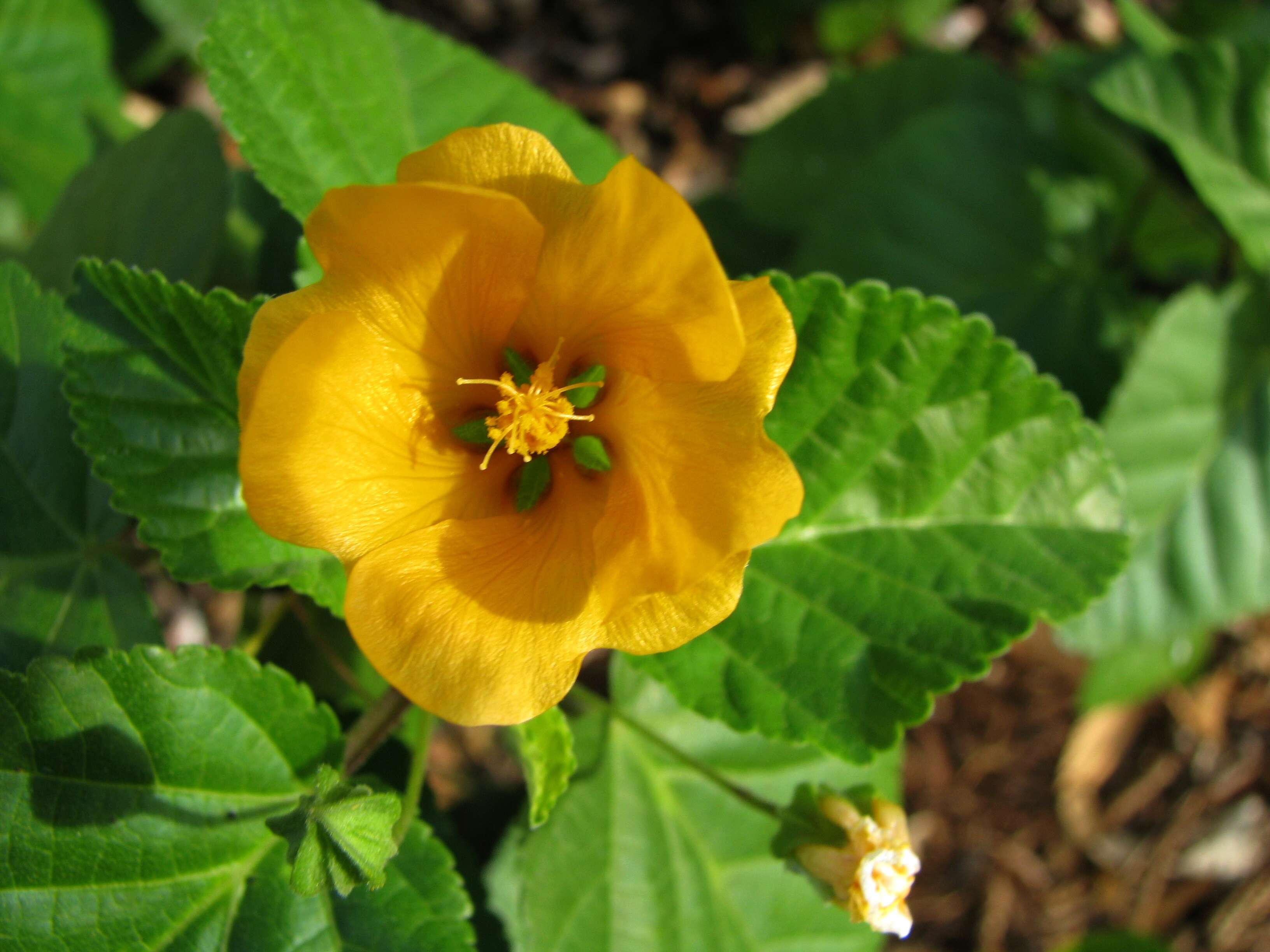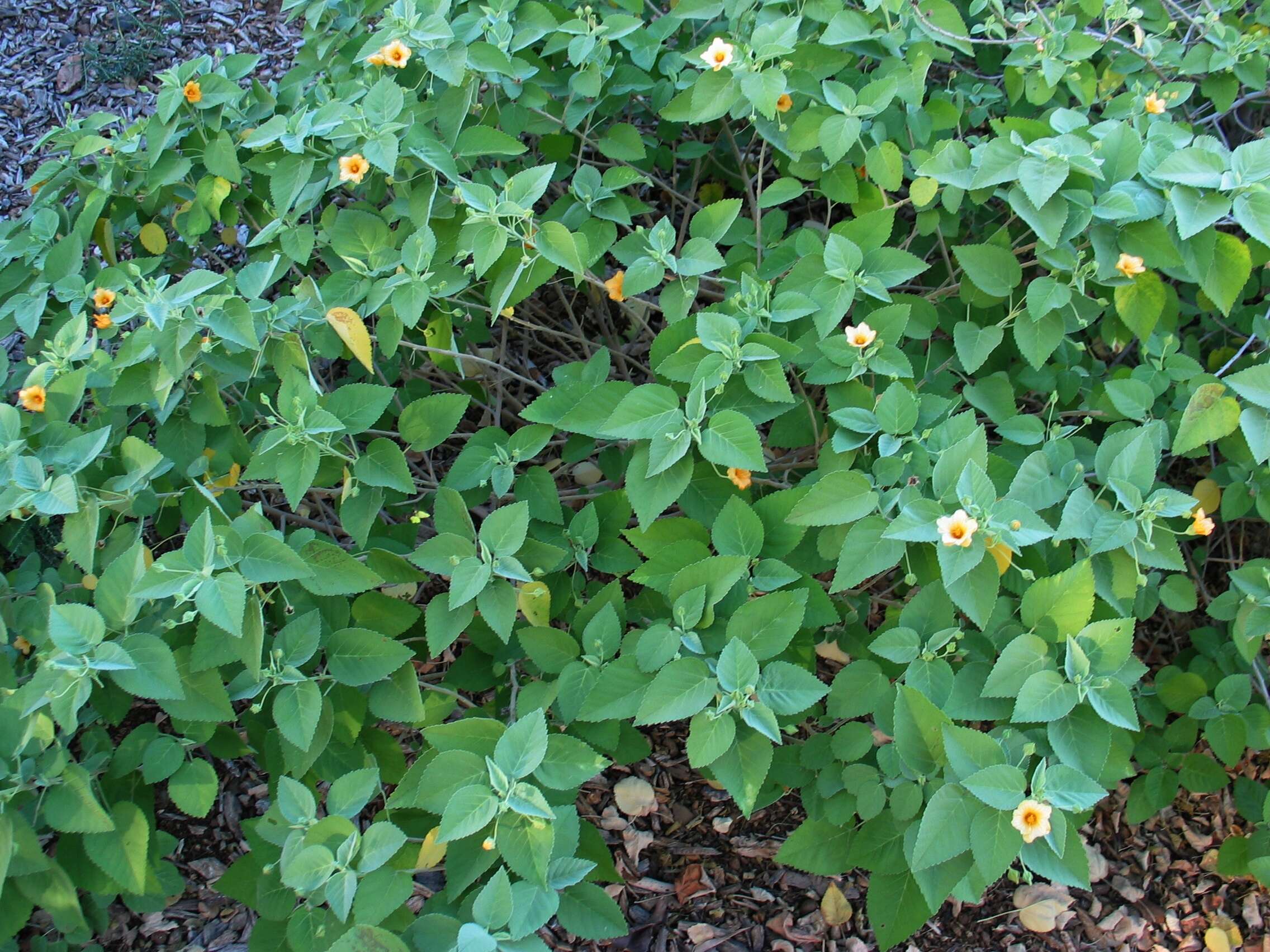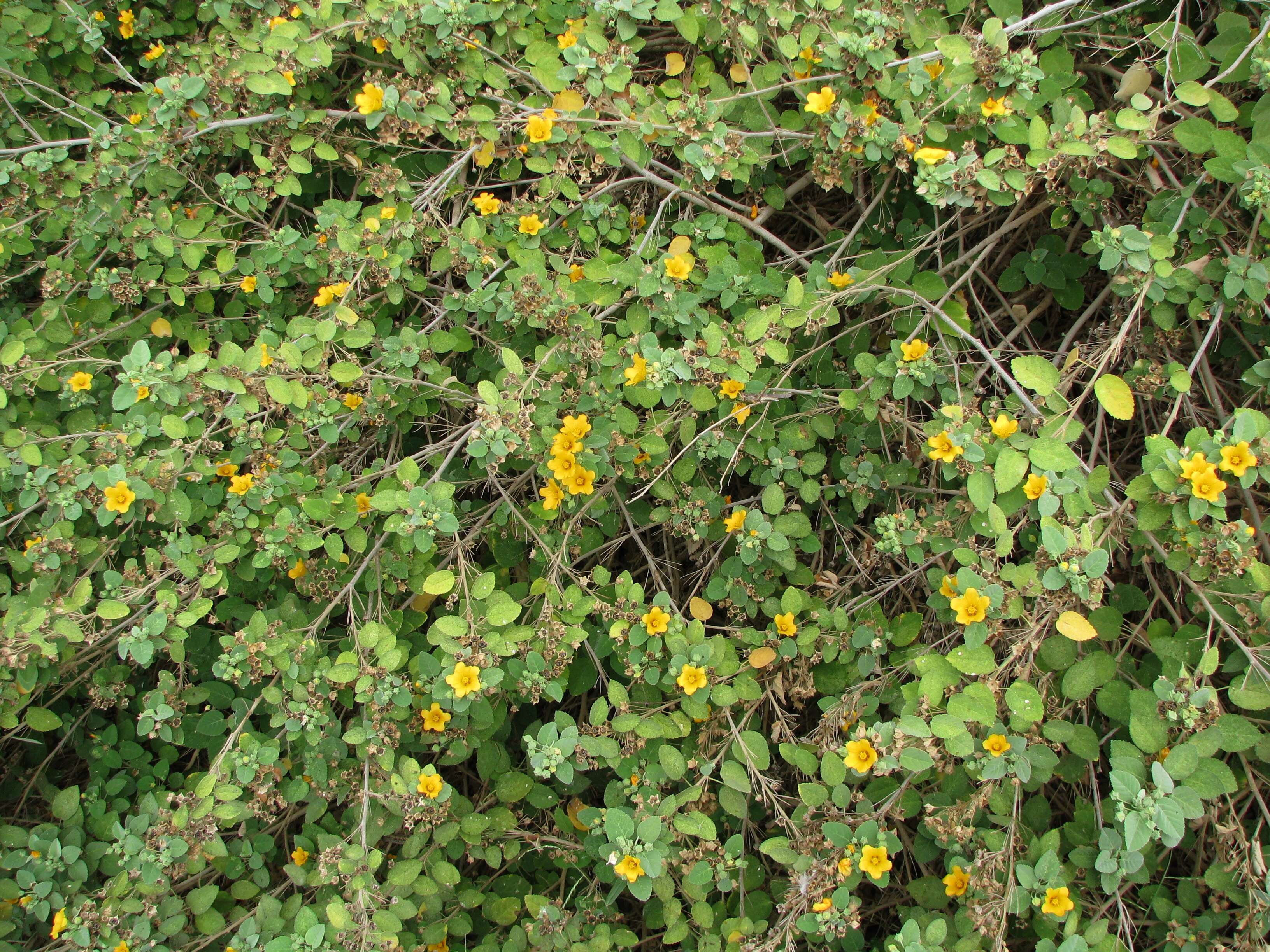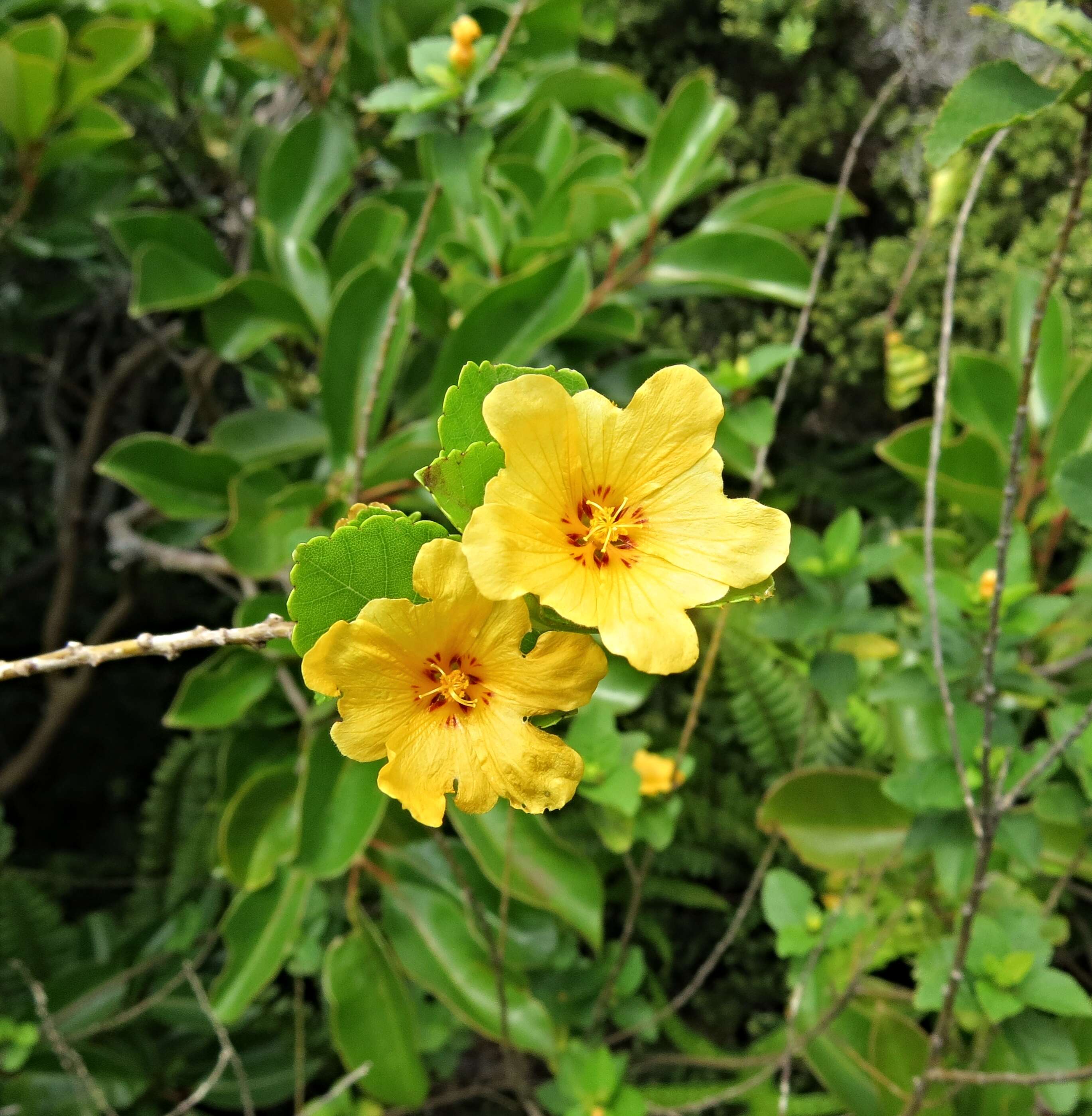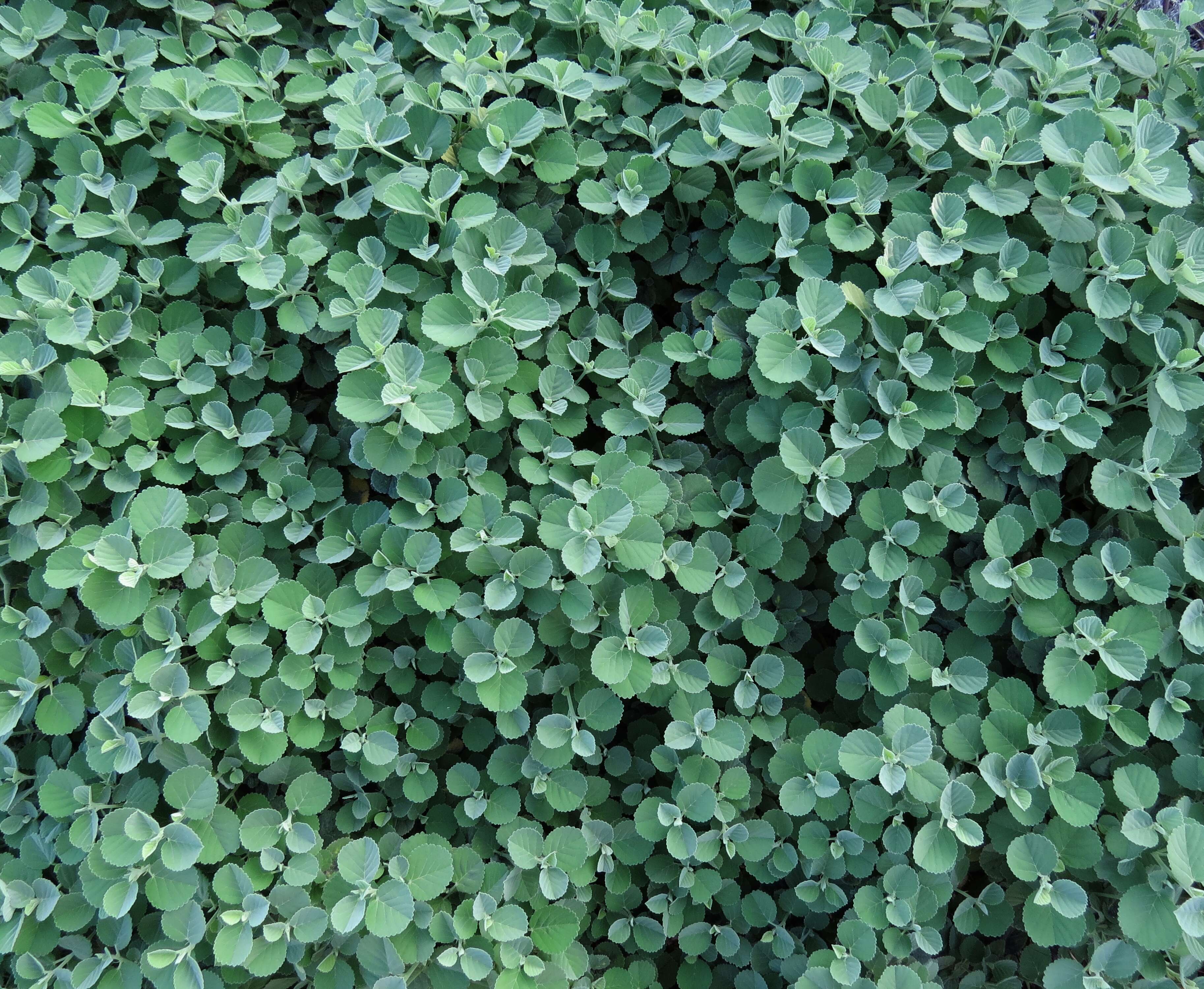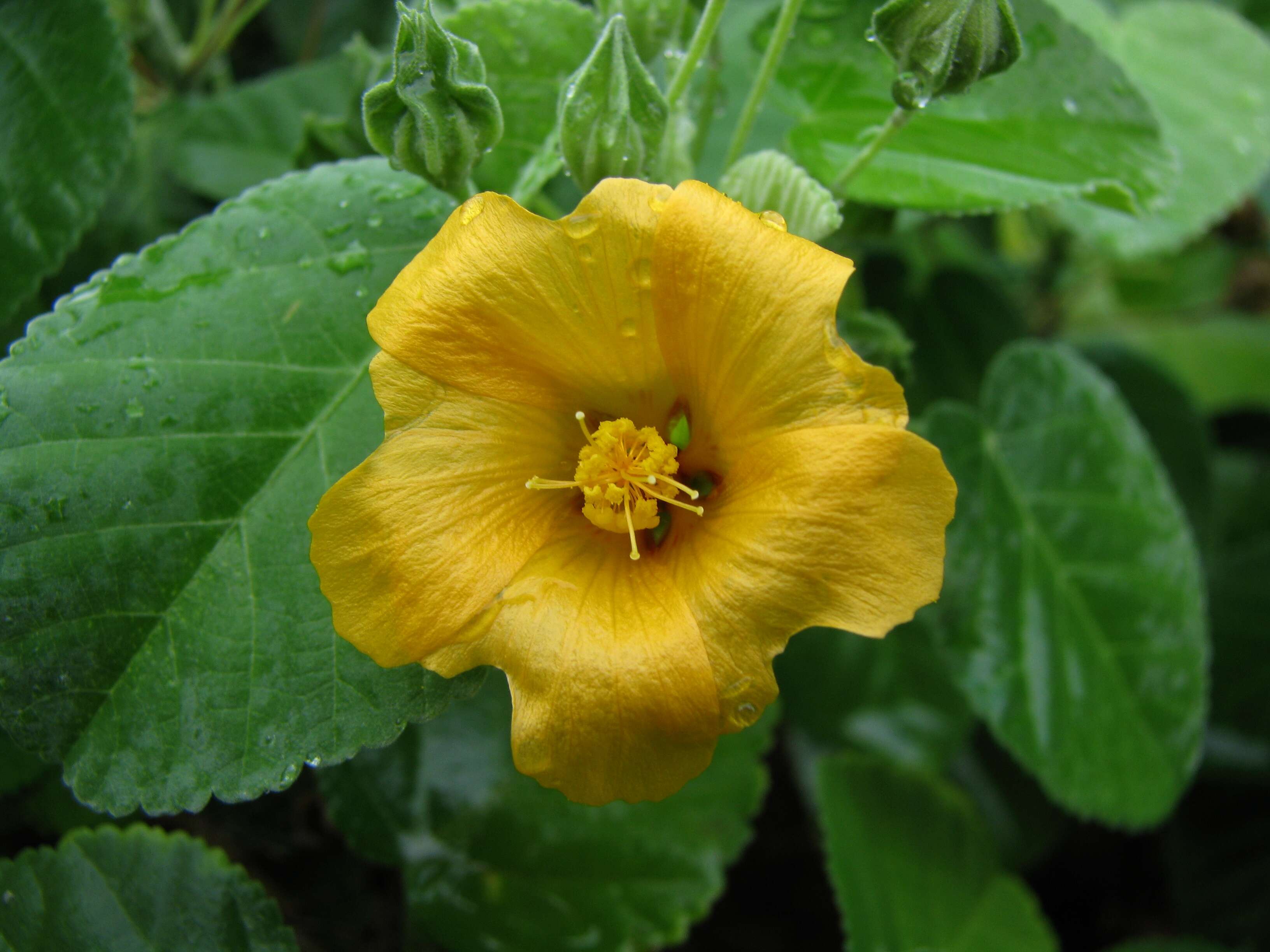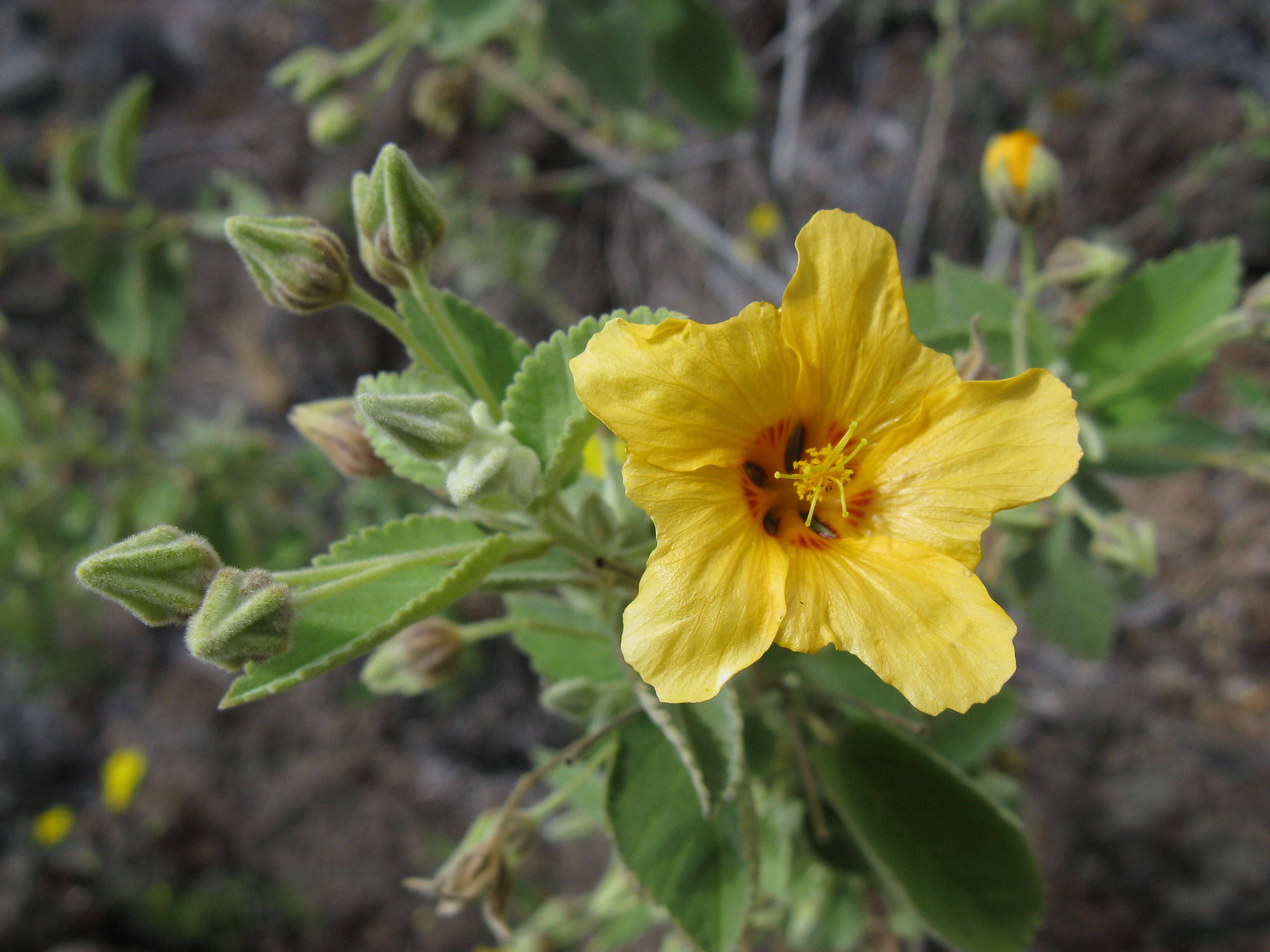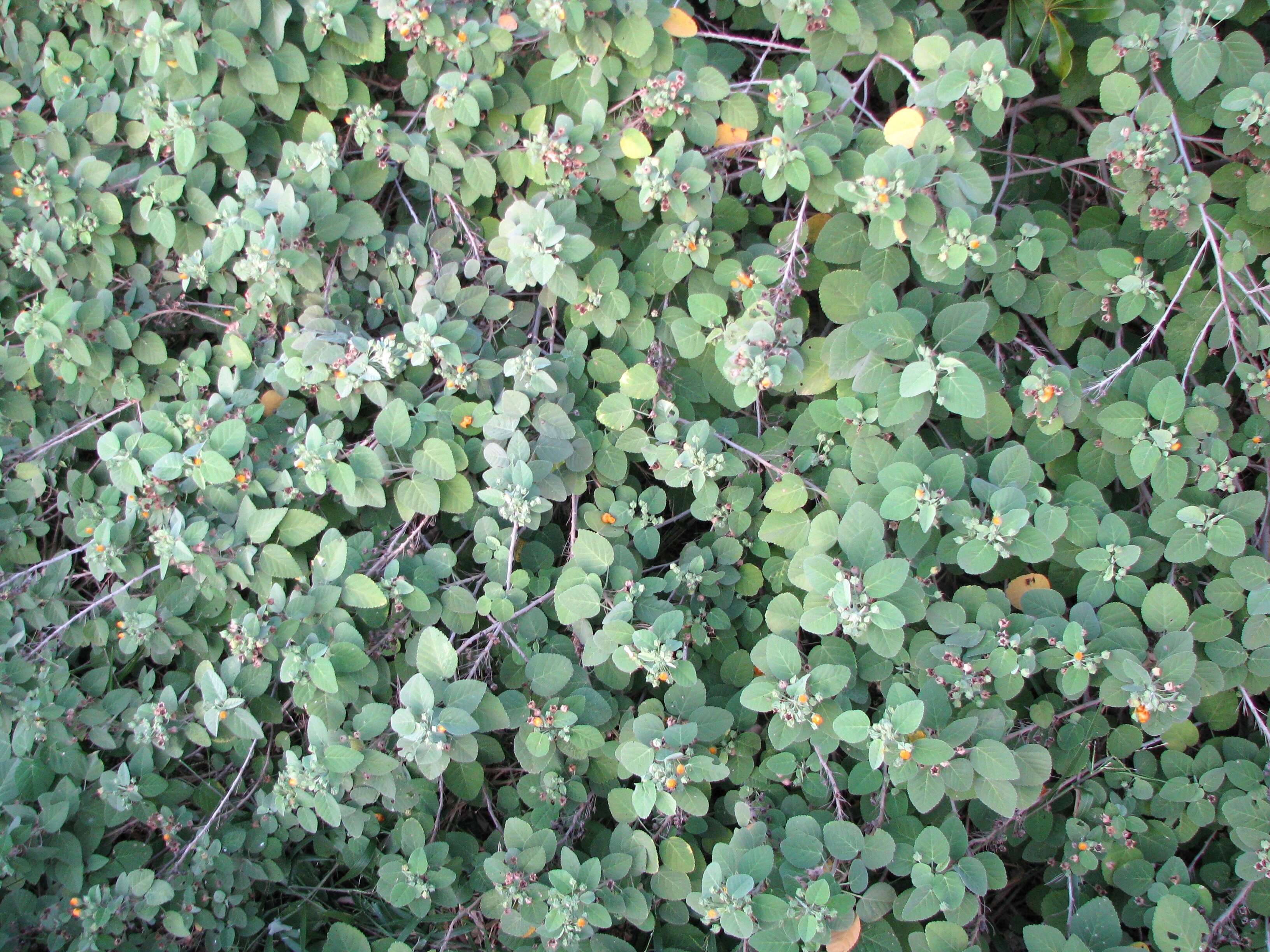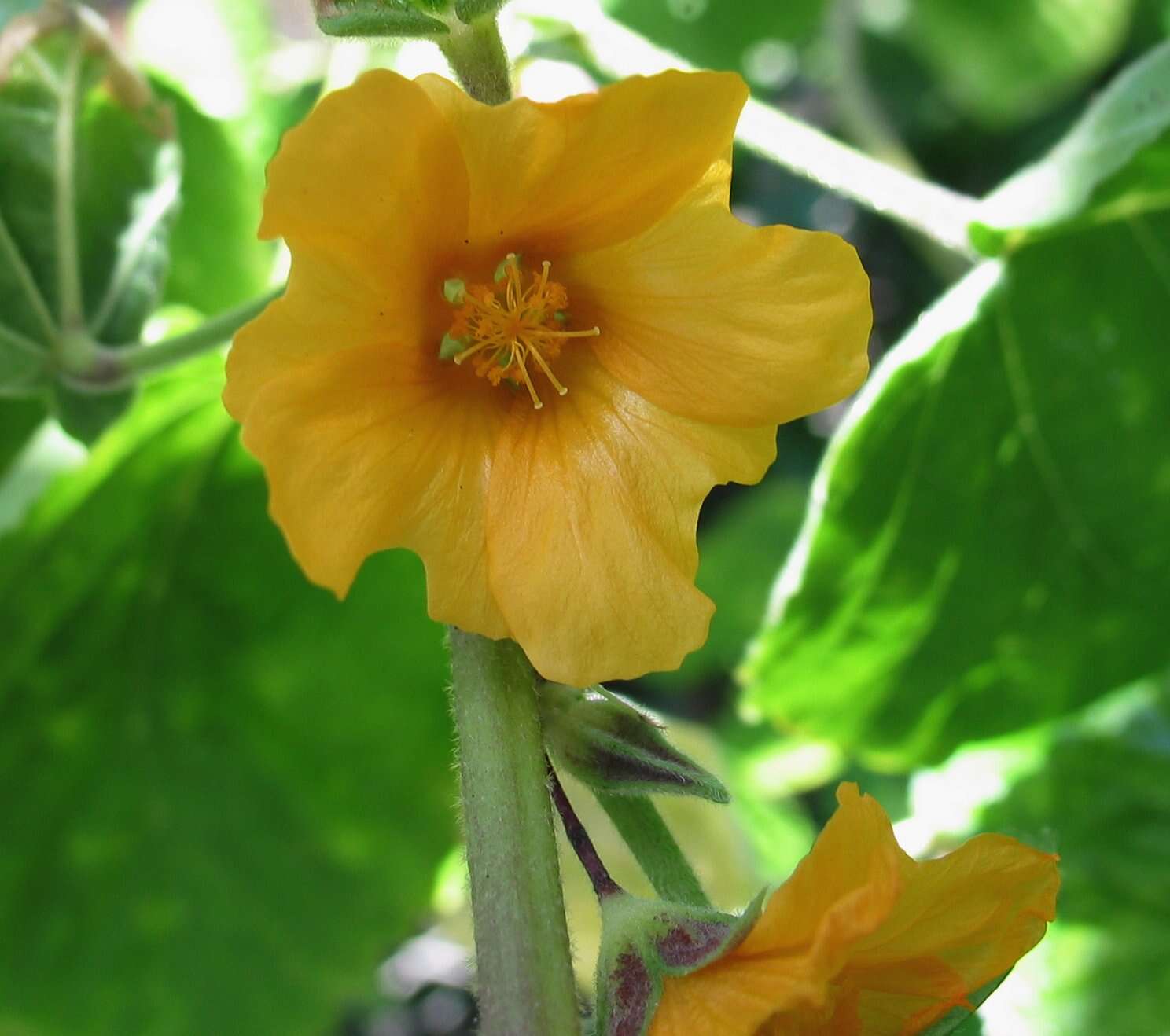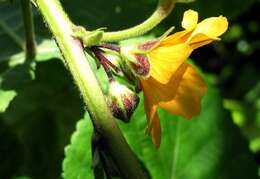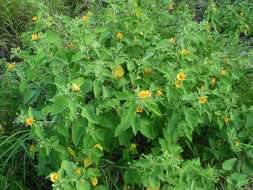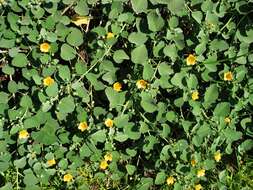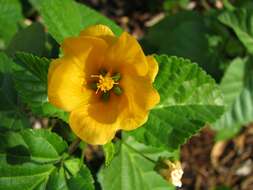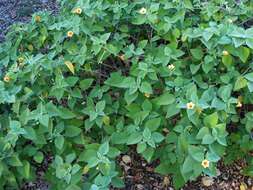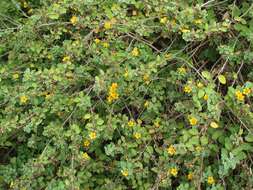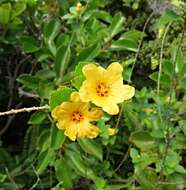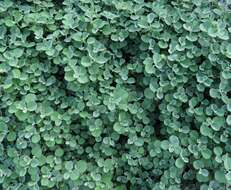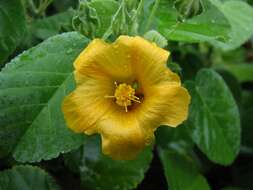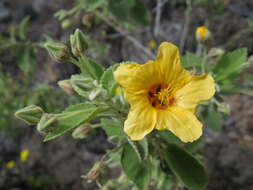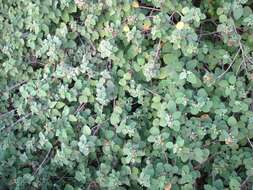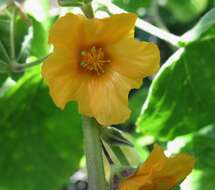Ilima, ilima k kula, or ilima k kala (wild tall form)MalvaceaeIndigenous to the Hawaiian Islands (form endemic?)Makakilo, OahuThis variety with attractive reddish calyxes grows to 10-12 foot tall trees. A few seeds were rescued before this small population was bulldozed for houses in Makakilo. A similar, if not the same, form can be seen in Honouliuli Preserve, which is just mauka of Makakilo.Side view
www.flickr.com/photos/dweickhoff/4766658638/in/dateposted/Ilima may have been the only plant cultivated by early Hawaiians just for the flowers to be used for lei. Ilima flowers were treasured by early Hawaiians and given specific names based on their flowers, as well as leaves. Originally, lei ilima, or the royal lei, was reserved for royalty since they looked very much like the yellow feather lei worn only by alii. Lei ilima were fashioned for the head (lei poo) or the neck (lei ), the latter comprising a thousand flowers!The early Hawaiians also recognized and named wild and cultivated ilima. The wild types included ilima k kahakai, a flat beach form; ilima k kula or ilima k kala, very tall form; and a plant with smaller flowers, medium height found on old lava in Ka known as ilima makana. The cultivated, or domesticated, forms were called ilima piki or ilima lei, a tall spreading bush with golden flowers; and ilima kolikukui or ilima kol kukui (Lit., kukui candle or torch), an Oahu cultivated form with bronze red flowers.Ilima k kala along with other plant materials were placed over hot stones in the imu. The food to be cooked was then placed on the ilima to prevent it from being burned by the heated stones.Medicinally, ilima was called kanaka makai, literally meaning "good man." Early Hawaiians gave babies the juice of the flowers (pua ilima) as a mild laxative but apparently does not have an effect on adults. The number of buds were used was according to the age of the child. The buds were chewed by the mother before given to her baby. Wild ilima sap with warm sea water was used medicinally as enemas (hahano) for adults. Ilima flowers mixed with other plants were also used for "womb troubles." When a person felt weak, the bark of the roots were mixed with other plants and pounded together, strained and drunk as a tonic. Additionally, the root bark mixed with the flowers was used for asthma.Other early uses of ilima included sleeping house construction, slats in building houses, rough baskets, and as a covering on pebbled floors in houses under floor mats and sleeping mats.Hawaiian Queen Emma Kalanikaumakaamano Kaleleonlani Naea Rooke (1836-1885) enjoyed lei ilima over all other lei.Flowers often used for modern lei making in combination with materials or just as one prized lei. Local lei maker, Laurie Shimizu Ide, states that it takes "about 700 blossoms for a single lei, kui pololei, straight pattern." Though lei ilima was associated with royalty at one time, today anyone can wear this very special and beautiful lei. When lei ilima is seen on the wearer, its striking beauty certainly commands attention! Fruits of the non-native mao (Abutilon grandifolium), when green and soft, are used with lei ilima, one fruit at each end of the lei; or the pale-green, cap-like calyx of the ilima flower is used.Flowers are edible and can be used as a garnish with food. The flavor is mildly sweet to tasteless but with a refreshing, clean after taste.The mele (song) "Aloha Oahu" by Clarence Kinney opening verse says: "Aloha Oahu lei ka ilima Kohu manu hulu melemele." Translated: "Beloved is Oahu with the ilima lei Like the it's golden plumage."Ilima is still abundant in the Hawaiian coastal lowlands and forests. Sadly, though, the Oahu (Moho apicalis) and it's relatives, the Hawaiian honeyeaters, are now all extinct.In 1923, the Territorial Legislature chose Ilima as the official flower for the island of Oahu.EtymologyThe generic name Sida is from a Greek name used by Theophrastus (c.371-c.287 B.C.E.) in his writings for both a water-liy (Nymphaea alba) and a pomegranate tree.The specific epithet fallax is from fallacis, deceitful or false.
nativeplants.hawaii.edu/plant/view/Sida_fallax




